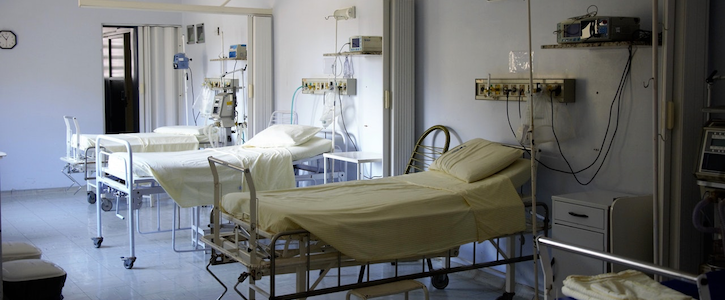Contact-Free Device Tracks Breathing, Movement of Patients on Opioids
The new tech has successfully identified patients who are experiencing respiratory depression.

A new device that offers continuous monitoring of hospital patients without any contact between the device and the patient has proved effective at identifying respiratory distress in patients who are taking opioids.
In the study, EarlySense, a small, square-shaped sensor placed beneath a patient’s mattress or chair, detected 91 instances of respiratory distress over 6,590 patient days in a hospital. Seventy percent of the events detected by the device were later diagnosed as sleep apnea-related or respiratory depression. The study’s false alert rate was less than 1 per 5,000 hours of monitoring.
Tim O’Malley, EarlySense’s president, told Healthcare Analytics News™ that the device sends a notification when a patient’s heart rate or respiratory rate crosses a predetermined threshold. But it also detects when a patient is heading toward a threshold, allowing for early warnings.
“Finally, all of these data [are] trended so clinicians can see a very clear picture of the patient’s condition over time,” he said. “This can help identify subtle changes in the patient’s condition and overall status.”
The research comes at a time when many physicians and healthcare systems are re-evaluating their use of opioids, amid the ongoing opioid crisis. The research highlights the risks of opioids, even when they are used in a hospital setting.
Michael Wong, J.D., executive director of the advocacy group Physician Patient Alliance for Health and Safety, said respiratory depression is one of the major complications facing patients who take opioids.
“For this reason, all patients receiving opioids should be continuously electronically monitored, to help provide early detection of the risk of respiratory depression and enable timely intervention,” he said in a press release.
O’Malley noted that the motion sensors in the device can provide other data, too, such as how often a patient is turned in their hospital beds, information that can help prevent pressure ulcers.
The continuous nature of patient monitoring would represent a major shift in how patients are cared for in hospitals, where many patients on opioids are monitored only every four hours. The needle-free, electrode-free nature of the monitoring is patient-friendly, O’Malley added.
“In hospitals today, the majority of patients are not being continuously monitored,” he said. “Contact-free continuous monitoring allows patients the freedom of movement while still providing key vital sign monitoring to the clinicians.”
Analytics yielded from such monitoring can result in reductions in code blue events, length of stay and transfers to the intensive care unit.
“The data provided in-hospital need to be immediate, enabling the staff to intervene as soon as a patient begins to deteriorate, given the patient’s already-compromised condition,” he said.
The device can also be used at home. In such cases, O’Malley said, the data can be used to spot changes in a patient’s baselines, theoretically preventing hospital visits. While the device can play an important role in patients’ stays at a hospital, one place it won’t appear is the patient’s hospital bill. The device is not currently covered by health insurance, and he said hospitals are not billing patients for the device at this time. Consumers purchase EarlySense sensors for home use for $299.
Get the best insights in healthcare analytics directly to your inbox.
Related
How AI Is Shaking Up Healthcare, Beyond Diagnostics
65% of Docs Prescribed More Opioids Than They Thought
FDA Challenges Digital Health Innovators to Join Fight Against Opioid Abuse